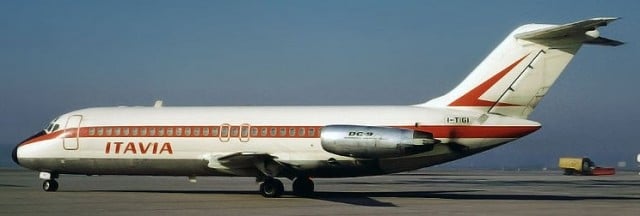An Assassination of International Proportions 27 June 1980 and a Cover-Up by NATO – Civilian Jet with 81 Onboard Shot Down by French Mirage Instead of Qaddafi’s Plane over Sicily
[Editors Note: Although former Italian President Francesco Cossiga had confirmed that Itavia Flight 80 was shot down by French Fighter jets the details were not released before or after his death. It appears that only the opening of the Libyan archives brought out the truth, with NATO and France denying responsibility. The apparent murders of many of the witnesses may have been their prime motivation in refusing to acknowledge anything…Jim W. Dean]
Our thanks to…. FlyHistoricWings …CounterPsyOps …and Christella Bernardene Krebs.
The Dark Story of Itavia Flight 870
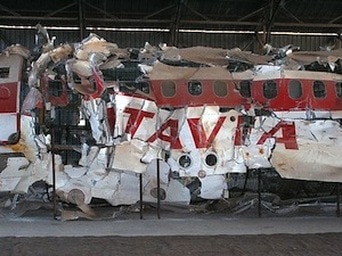
On the night of June 27, 1980, Aerolinee Itavia Flight 870 (a DC-9 registered as I-TIGI) departed Bologna, Italy, en route to Palermo, Sicily.
On board were 77 passengers, two pilots and two flight attendants. Of those, 64 were adult passengers, 11 were children aged between two and twelve years old and two were children under the age of 24 months.
As usual, Itavia Flight 870 proceeded uneventfully on its regular route southward off the coast of Italy. Then, at 8:59 pm, the aircraft suddenly disappeared off the radar screens of Italian Air Traffic Control.
No report of trouble or declaration of an emergency was received from the pilots — one second the plane was there and the next, it was gone. All 81 souls on board died as pieces of the aircraft fell into the sea.
At first, it seemed that the circumstances of the loss didn’t make sense — the aircraft had been flying along perfectly and then, quite inexplicably, it had exploded in midair with the loss of everyone on board.
In response to questions from the media, government officials offered that Flight 870 might have been downed by a terrorist bomb. Initially, that explanation made some sense, but then no terrorist organization stepped forward to make a claim of responsibility.
Unsatisfied, the media returned to ask more questions — and as if by some order from above, officials suddenly went silent. No additional information was forthcoming. This in turn fed media suspicions that the real story was being kept from public view. Sadly, they were right. Everywhere they turned, doors were suddenly closed. It seemed as if nobody was willing to talk about what had happened.
Even more ominously, it was soon discovered that tapes of radar plots had disappeared or had been somehow erased. Other records were also missing or suddenly unavailable. Even more chilling, key witnesses began dying in strange circumstances — car accidents, suicides, and even a heart attack.
What followed was the beginning of a decades long cover up, one that would go to the highest levels of no less than three governments. It is a cover up that is still in force even today. The events played out like a bad Hollywood movie, except that it was altogether real.
Out of the Darkness, into the Light
The story of Itavia Flight 870 is a dark tale of missteps, errors, and cover ups that involved no less than three governments on one side and a hostile government on the other — Muammar Qaddafi’s Libyan dictatorship. The details of what happened that night still remain largely a mystery, but key pieces of evidence have recently emerged that shine light onto a long held secret.
With the fall of the Qaddafi government in 2011, the archives of Libyan state secrets have been partly opened. There, amidst countless stories of terrorist plans, international ventures and terrible misdeeds are the reports detailing the night of June 27, 1980.
Setting the Stage for the Shootdown
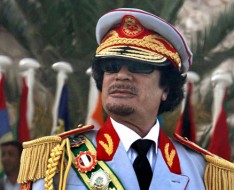
In 1980, the international community was arrayed against an increasingly belligerent Libyan government under the leadership of the dictator, Col. Muammar Qaddafi.
In the United States, the Jimmy Carter Administration was in its final year and embroiled in an election race against an upstart actor and former governor of California named Ronald Reagan.
In Europe, NATO was deeply engaged in the Cold War. The Soviet Union had just invaded Afghanistan — it seemed that the world was on the brink of conflict.
For those nations along the Mediterranean Sea, Libya was a growing problem. Qaddafi’s forces were increasingly involved in attempts to destabilize governments in the region, including many former French colonies in North Africa.From the perspective of the French Government, the time had come to eliminate the problem of Qaddafi.
An Assassination of International Proportions
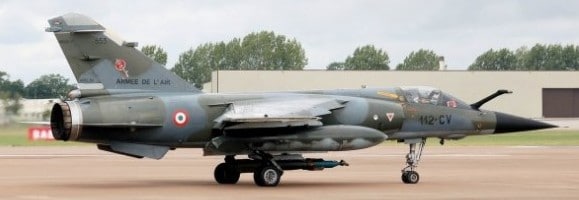
If new documents uncovered in Libya are to be believed, the opportunity to assassinate Qaddafi presented itself on the night of June 27, 1980, when he was scheduled to fly home from Europe and across the Mediterranean in his personal Tupolev airliner.
A pair of French Mirage jet fighters were readied for a very special mission — Qaddafi’s jet would be intercepted and shot down, leaving all parties involved with plausible deniability. If all went well, the wreckage would be lost at sea and the action would resolve the Libyan problem once and for all.
From the start, however, things didn’t quite go as planned. What should have been a simple interception turned into a confusing engagement with jet fighters involved from no less than four nations.
The French, the Libyans, the Italians and the Americans would all converge toward a single point over the sea off the coast of Italy — and flying into the melee would come Itavia Flight 870, completely unaware of the unfolding drama ahead.
Unbeknownst to the French, however, their assassination attempt was doomed from the start. According to the newly uncovered Libyan documents, Qaddafi was tipped off at the last moment about the plot by someone from within the SISMI, Italy’s secret service.
Thus, Qaddafi made a snap decision and diverted his plane to land on the island of Malta.

Notably, the SISMI maintained a degree of influence through high level contacts within Libya. Italy continued its close ties with Qaddafi for years — in 1986, Italian politician Bettino Craxi would phone Qaddafi to warn him of the incoming USAF F-111 raid — once again with the help of the Italians, Qaddafi would survive by fleeing his compound minutes before the bombs hit.
On that night in 1980, a Libyan Air Force MiG-23 fighter jet was already flying north to meet and escort the Qaddafi plane home to Libya, when he diverted to land in Malta.
Somehow, in the confusion of developing events, the MiG-23 pilot, Ezedin Koal, was neither notified nor ordered back to base. Instead, he flew north across the Mediterranean Sea, searching for Qaddafi’s Tupolev.
On the NATO side of the equation, the Libyan MiG-23 was immediately picked up as “fast mover” on air defense radars. As per standard protocol, the Italian Air Force and US Navy dispatched fighters to intercept the plane as it neared Italian airspace.
A Suddenly Confusing Engagement
Minutes later, the Libyan MiG-23 was already off the coast of Sicily. Concurrently, three Italian Air Force F-104S jet fighters and at least one US Navy A-7 Corsair II (probably this was a flight of two aircraft) closed in separately from the east.
The two French Mirage aircraft raced in from the north with the dark intent to perform their deadly assassination mission.
Yet now, no fewer than seven and possibly as many as nine NATO fighter planes were converging on a single point on the map in the night skies over the Mediterranean Sea — and, completely unknowing, into the midst of the developing melee flew Itavia Flight 870.
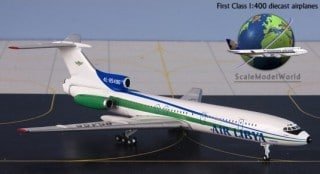
Apparently, the Libyan MiG-23 pilot was first to spot the civilian DC-9 airliner on his radar. The aircraft was heading southward as expected. For the Libyan pilot, it was right where it should have been.
He turned his MiG-23 to join into close formation with the airliner, which he apparently mistook for Qaddafi’s Tupolev in the darkness of the night skies. For the French fighter pilots, this newly formed up pair of aircraft exactly matched their mission expectations.
There was a large airliner sized target, clearly Qaddafi’s Tupolev, escorted by a single Libyan jet fighter that had joined up from the south. Together, the two targets were flying southward in the direction of Libya.
No warning shots were fired — this was to be an assassination, pure and simple. One of the French pilots launched an air-to-air missile aimed at the larger target. The missile struck home, hitting the forward section of Itavia Flight 870 with a perfect hit. The airliner never stood a chance — it was literally blown out of the sky.
As the French Mirage pilots watched the fireball appear and disappear in the distance, their radars showed the Libyan MiG-23 break off and circle out into a counterattack. There was only one loose end to tie up — they would have to shoot it down as well
Tying Up Loose Ends — Finishing the MiG-23
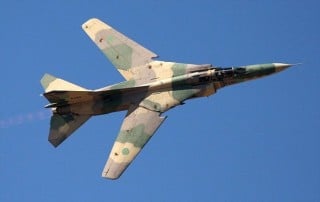
Upon seeing the missile impact the airliner nearby, the Libyan MiG-23 pilot, Ezedin Koal, pulled away, searching for nearby enemy aircraft. In every direction his nose would have pointed, the radar would have suddenly shown more enemy fighter jets.
A flight of three Italian F-104S Starfighter aircraft closed in from one side while one or two A-7 Corsairs from the US Navy came from another direction.
Two French Mirage fighters pressed in from the north, their radars lighting up his early warning radar receiving systems as they tracked him and prepared to fire.
From Ezedin Koal’s perspective, he was alone and in deep trouble. With few options, he would have to fight and somehow escape to the south. The odds of survival were clearly slim. There could have been no doubt of the hostile intent of the enemy aircraft — after all, they had just shot down and, in his mind, assassinated Col. Qaddafi himself, the very man he was to escort and protect.
What followed was a confusing series of high speed maneuvers and counter-maneuvers in the dark night skies over Italy. The French and Libyan jets maneuvered over the water in a turning dogfight while US Navy and Italian jets circled.
The fight shifted eastward over the Italian mainland before the MiG-23 was finally either shot down or driven into the mountains that were hidden in the shadows of night below.
Ultimately, the Libyan MiG-23 would crash into the Sila Mountains in Castelsilano, Calabria, located in the center of the lower boot of southern Italy. In a flash, Ezedin Koal would be killed in the crash.
Their mission accomplished, the French Mirage fighter jets turned to fly northward to France. With the last loose end tied up, it seemed assured that there would be no witnesses to their assassination of Muammar Qaddafi.
Aftermath and Cover Up of the Shootdown
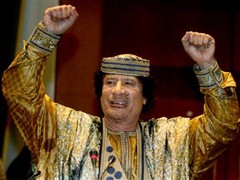
Qaddafi had escaped clean and clear from the aerial assassination attempt. He would live on, the penultimate survivor, until Libya’s “Arab Spring” of 2011. France would never speak publicly about the events of that night. Italy too would choose a policy of silence and cover up.
The United States would remain silent, being an outside, non-European observer. Amidst the deafening silence from official sources, the media would call the loss of Flight 870 the Ustica Massacre (“Strage di Ustica” — after a nearby island in the Tyrrhenian Sea).
Then, on July 18, 1980, fully 21 days after the shootdown, the wreckage of the Libyan MiG-23 was located in the Sila Mountains. The body of Libyan Pilot Ezedin Koal was still strapped to the ejection seat, his identity revealed by the name imprinted on his helmet.
Officials were none too pleased when two news reporters were dispatched to document the crash site. They ordered that both be arrested and held until they agreed to turn over their film.
Despite these further efforts at cover up, the press would later uncover that the Libyan pilot’s body was inexplicably decomposed, as if consistent with the body having died three weeks earlier, at the time of the downing of Flight 870. This linked the two events and added yet more fuel to the fire of press interest.
The pilot’s body would be repatriated to Libya after having been buried for a time in Italy.
Strange Coincidences and a Few Unexplained Deaths
The alleged cover up would extend yet further when radar tapes that documented the events of that night were somehow erased or disappeared. This may have been coincidental, but again, it was just another in a long series unlikely coincidences.
Likewise, due to the roadblocks and cover up, it took nearly nine years for the recovered pieces of the DC-9 to be examined and written up into a formal accident investigation report — an unfathomably long time in the field of aviation.
The report flatly concluded, “All available evidence considered unanimously confirms that the DC-9 incident was caused by a missile that exploded near the nose of the plane. At the present time, the evidence is insufficient to specify the type, origin and identity of the missile.”
Aviation Week and Space Technology bolstered the report by publishing that the damage to the airliner’s fuselage was consistent with that caused by a continuous-rod missile warhead as employed in air-to-air missiles. Any doubts of military involvement in the events were rapidly fading — but whose military?
Were the Libyans responsible for an act of air-to-air terrorism? Was it someone else? Soon, the political left took up the banner that the Americans and the US Navy had accidentally shot down the plane.
Unexpected Deaths of Key Witnesses
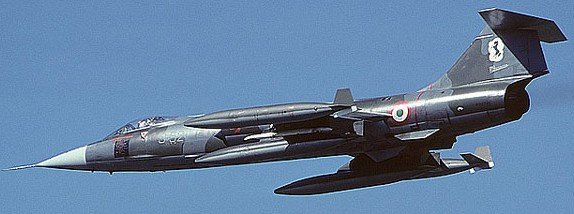
Even more chilling, though perhaps once again coincidental, a number of those who were working that night and who would have been key witnesses to the events afterwards would die in strange circumstances. The commander of the Italian airbase from which the intercepting Italian F-104S fighter jets had launched would die suddenly in a car accident.
Two of the radar controllers who witnessed the full picture of the events of that night on their screens would commit suicide by hanging (an odd personal choice given the pain involved).
Another radar controller also died, but this time of an unexpected heart attack — he was just 37 years old. A fourth air traffic controller who had direct knowledge of the events of that night was later found murdered.
Finally, two of the three Italian Air Force pilots who had intercepted the Libyan MiG-23 died in a midair collision during an air show at Ramstein AB in Germany. For many conspiracy theorists, these deaths were all too coincidental.
Some of the Italian Air Force officials who might have known about the disaster’s background died suddenly.
- August 3, 1980: Col. Pierangelo Teoldi, was nominated to become Commander of Grosseto AFB, but had not yet assumed command at the time of his death – car accident.
- May 9, 1981: Maurizio Gari, Poggio Ballone air defense radar controller – heart attack at age 37.
- March 31, 1987: Mario Alberto Dettori, Poggio Ballone air defence radar controller – suicide by hanging.
- August 28, 1988: Mario Naldini and Ivo Nutarelli, Italian Air Force – the pilots who crossed Flight 870′s path on June 27 over Tuscany – mid air collision during the 1988 Ramstein Air Show.
- February 1, 1991: Antonio Muzio, Lamezia Terme control tower officer – murdered.
- February 2, 1992: Antonio Pagliara, Otranto air defence radar controller – car accident.
- December 21, 1995: Franco Parisi, Otranto air defense radar controller – suicide by hanging.
__________________________
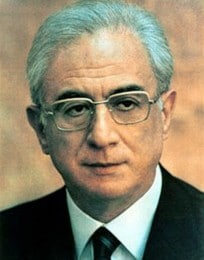
Finally, a formal inquiry was launched by an Italian judge named Rosario Priore, but even then, his efforts were stymied by roadblocks put up by NATO and Italian political and military figures.
He would make note of the apparent cover up in his report and subsequently, four Italian generals would be charged with the crime of High Treason for obstructing the investigations. With the expiration of the statute of limitations, the cases would be dropped.
In July 2006, the recovered fragments of Flight 870 were re-assembled and brought to Bologna from Pratica di Mare Air Force Base near Rome. A year later in June 2007, the reassembled fuselage was placed on public display at the newly opened Museum for the Memory of Ustica in Bologna.
It stands as mute testimony to what was probably an attempted assassination that went wrong — terribly wrong — and the deaths of 81 innocent civilians and one Libyan MiG pilot.
Then in 2008, the former President of Italy, Francesco Cossiga, stepped forward to confirm that Itavia Flight 870 was downed by French fighter jets. His admission was a bombshell, yet still, the fine details of the events of that night were not released. Shortly afterward, France was served with a claim for damages. Less than two years later, Cossiga would die of respiratory problems.
Finally in 2011, the Italian courts would order $127 million in reparations be paid by the Italian government to the families of those who perished. The true story of what happened in the night skies over the Tyrrhenian Sea, is finally coming to light.
With the release of the latest records from the Libyan government archives, the only question remaining is when public officials will finally accept responsibility for what happened — to confirm or deny the sequence of events claimed in the Libyan documents. After 32 years, it seems that enough time has passed for the truth to be revealed. For more info see: The mystery of flight 870
End Notes:
The events described above are based on a mix of fact, carefully made judgments from public sources and — to a large extent — reports recently uncovered in Libya. This story assumes the Libyan documents to be valid…. As a reasonable disclaimer, we must state that portions may be inaccurate. If and when known, updates will be published and corrections made.
At HW, we sincerely hope that the final official release will disprove French government complicity in the deaths of those aboard Flight 870. Ultimately, however, we must also accept that we may never know the full truth of what happened during Italy’s Darkest Night.
In 1981, French president Valéry Giscard d’Estaing plotted an assassination attempt with Egypt. His administration spoke with the Reagan administration for approval.
On the 19th of August 1981, it was revealed that the USA planned on assassinating Muammar al-Qathafi. The Sixth Fleet of America, began its manuevers off the Libyan Coast in the Gulf of Sirte (waters openly proclaimed as Libyan domiciled territory).
VT Editing: Jim W. Dean
ATTENTION READERS
We See The World From All Sides and Want YOU To Be Fully InformedIn fact, intentional disinformation is a disgraceful scourge in media today. So to assuage any possible errant incorrect information posted herein, we strongly encourage you to seek corroboration from other non-VT sources before forming an educated opinion.
About VT - Policies & Disclosures - Comment Policy

